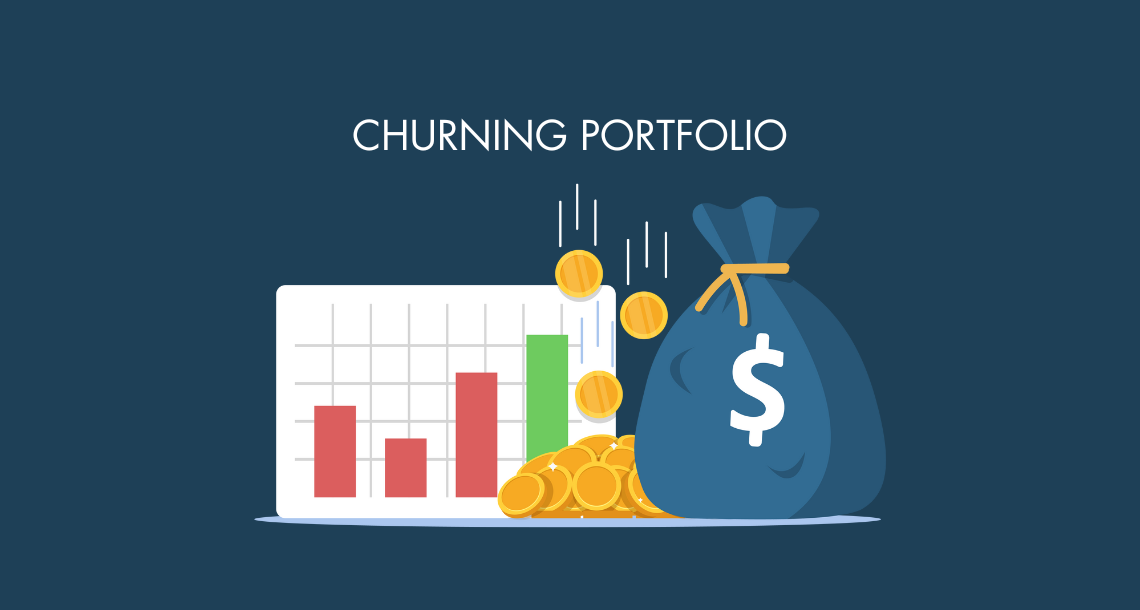Perfect Timing for Churning Your Long-Term Portfolio

As proud long-term investors, we've thrived by sticking to our strategy. Daily market fluctuations and news-driven price movements rarely concern us. But does this mean we never change our long-term portfolio? Absolutely not.
Long-Term Investing Isn’t “Set It and Forget It”
Many experts advocate for the "buy and hold" or "set it and forget it" approach, suggesting that holding investments for a long time ensures good returns. While there's some truth to this, it’s not the whole story. You need to hold onto your good investments, not the bad ones. As Warren Buffett wisely said:
“Time is the friend of the wonderful company, the enemy of the mediocre.”
Holding fundamentally strong and well-managed businesses can create enormous wealth and deliver multibagger returns. However, holding onto mediocre or weak businesses can hurt your returns. Let’s compare two hypothetical stocks:
Stock A delivers an average annual return of 15%.
Stock B delivers an average annual return of 5%.
Over 20 years, the wealth created by Stock A is significantly more than that of Stock B. This demonstrates that long-term investing doesn’t mean holding onto all your original investments forever. If an investment isn’t performing or its fundamentals have changed, there’s no point in holding it.
When and Why to Churn Your Portfolio
If a stock’s fundamentals are deteriorating or the business loses momentum, its future performance is at risk. We want to stay invested in our best and strongest ideas. For underperforming stocks, we recommend exiting and replacing them with new stocks that have the potential to create significant long-term wealth.
The Art of Churning Your Portfolio
Regular Monitoring: Continuously monitor your stocks' fundamentals. Watch for signs of declining performance, such as falling earnings, poor management, or loss of competitive advantage.
Set Exit Criteria: Establish clear criteria for when to exit a stock. This could be based on financial metrics like a significant drop in revenue or profit margins, or qualitative factors like changes in industry dynamics.
Seek New Opportunities: Always look for new investment opportunities. Markets evolve, and new fundamentally strong businesses emerge. Diversify your portfolio with stocks that meet your investment criteria and show growth potential.
Avoid Emotional Decisions: Don’t let emotions drive your investment decisions. It's easy to get attached to a stock, especially if it's been in your portfolio for a long time. Make objective decisions based on data and analysis.
Review Annually: Conduct an annual review of your portfolio. This doesn’t mean you need to churn your portfolio every year, but it’s good practice to reassess your investments and ensure they still meet your long-term goals.
Why Churning Your Portfolio is Crucial for Long-Term Success
Maximizing Returns: By holding onto fundamentally strong stocks and replacing underperforming ones, you maximize your potential for higher returns. This strategy ensures your portfolio is always positioned to capitalize on the best opportunities.
Managing Risk: Regularly reviewing and refreshing your portfolio helps manage risk. By exiting stocks that are declining in performance, you protect your investments from significant losses.
Staying Aligned with Goals: Your investment goals may evolve over time. Regularly refreshing your portfolio helps you stay aligned with your current financial objectives and risk tolerance.
The Power of Equity in Long-Term Wealth Creation
There's no doubt that equity has and will continue to outperform other asset classes in the long term. However, to truly create wealth through equity investing, you need to be invested in a portfolio of ever-appreciating, fundamentally strong stocks. Achieving this relies on proper stock selection, continuous monitoring, and knowing the right entry and exit points.
Investing in equities can be a powerful way to create wealth, but it’s essential to be strategic. By regularly reviewing and refreshing your long-term portfolio, you ensure that you remain invested in the best opportunities, maximizing your returns while managing risk effectively.
Stay proactive, stay informed, and keep your portfolio aligned with your long-term goals for sustained success.
Frequently Asked Questions (FAQ)
1. What does “churning your portfolio” mean?
Churning your portfolio involves regularly reviewing and adjusting your investments by selling underperforming stocks and replacing them with new opportunities that have better potential for long-term growth.
2. Why isn’t long-term investing a “set it and forget it” strategy?
While long-term investing emphasizes holding investments over time, it’s important to hold onto fundamentally strong and well-managed businesses. Holding onto mediocre or weak businesses can hurt your returns, so it’s necessary to periodically reassess and adjust your portfolio.
3. When should I consider churning my portfolio?
You should consider churning your portfolio when:
- A stock’s fundamentals are deteriorating.
- The business loses momentum.
- New investment opportunities arise that meet your criteria for strong potential growth.
- Your financial goals or risk tolerance change.
4. How can I monitor my stocks’ fundamentals effectively?
To monitor your stocks’ fundamentals:
- Continuously review financial performance metrics like earnings, revenue, and profit margins.
- Pay attention to management quality and competitive advantage.
- Stay updated on industry trends and dynamics that could impact the business.
5. What criteria should I use to decide when to exit a stock?
Set clear exit criteria based on:
- Significant drops in revenue or profit margins.
- Negative changes in industry dynamics.
- Declining competitive advantage.
- Poor management performance.
6. How do I find new investment opportunities?
To find new investment opportunities:
- Conduct thorough research on emerging businesses and industries.
- Analyze financial statements and performance metrics.
- Diversify your portfolio by investing in different asset classes that show growth potential.
7. Why is it important to avoid emotional decisions when investing?
Emotional decisions can lead to poor investment choices, such as holding onto a stock out of attachment or fear of loss. Making objective decisions based on data and analysis helps ensure better investment outcomes.
8. How often should I review my portfolio?
Conduct an annual review of your portfolio to reassess your investments and ensure they still align with your long-term goals. While annual reviews are recommended, it doesn’t mean you need to churn your portfolio every year.
9. What are the benefits of churning your portfolio?
Churning your portfolio offers several benefits:
- Maximizes returns by holding onto strong stocks and replacing underperforming ones.
- Manages risk by protecting your investments from significant losses.
- Ensures your portfolio remains aligned with your current financial goals and risk tolerance.
10. Why is equity important in long-term wealth creation?
Equity has historically outperformed other asset classes in the long term. Investing in a portfolio of fundamentally strong and ever-appreciating stocks is crucial for creating wealth through equity investing.
11. How can I stay proactive in managing my portfolio?
To stay proactive:
- Regularly review and monitor your investments.
- Stay informed about market trends and new opportunities.
- Make objective, data-driven decisions.
- Seek advice from financial advisors if needed.
12. How can I start investing with Fynocrat?
To start investing with Fynocrat, you can plan your investments with us. We offer personalized investment strategies and professional guidance to help you achieve your financial goals through strategic portfolio management.






Member discussion